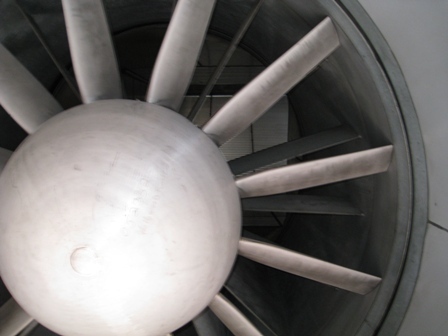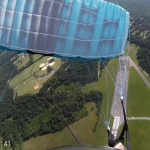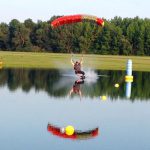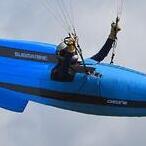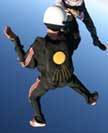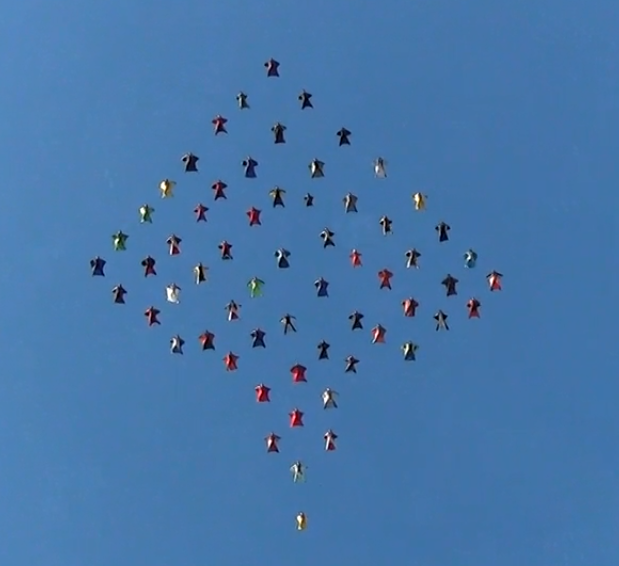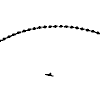Search the Community
Showing results for 'fluid wings'.
Found 119 results
-
Could you please also add the Prime from Fluid Wings? I've been looking to see some reviews on it. Thank you! http://fluidwings.com/prime-wing-information/
-
Connected front- and rearrisers
stayhigh replied to maggyrider's topic in Swooping and Canopy Control
Have you ever flown speed wing? I have flown Gin Fluid which had front riser trim tab and Swing Mirage and Spitfire which had rear riser trim tab. From my experience rear riser trim tabs are much easier to operate when under load. How was your experience with paraglider wings which had these tabs long time ago? Bernie Sanders for President 2016 -
can you please add Fluid Wings as a canopy manufacturer and the prime and helix as canopies. fluidwings.com I was that kid jumping out if his tree house with a bed sheet. My dad wouldn't let me use the ladder to try the roof...
-
Nobody would sell me an rds slider for a safire 159 either.... weird huh? Something about not needing it for performance, blah blah bla... So i made one myself... well actually like 20 of them and lots of hop and pops. I personally have a hate hate relationship with standard sliders. Theyre annoying, restrictive and i cant see shit behind me. I started for that reason and now its starting to help performance on a katana 135 loaded at 1.7. Its just so nice to take it off (which is faster than stowing and collapsing and stuffing it behind your head) and then letting everyting open up and being able to look around and see everything. ok bottom line is there are more benefits than just performance. It does add a minute to pack times but oh well. Totally worth it to me. Im going to go out on a limb and just guess that pd doesnt offer them for intermediate canopies because its more of a liability than its worth to them... If someone hooked it up wrong and then had a killer opening, well nothing falls back on them necessarily, but it looks bad. I dont know of a manufacturer (other than Fluid Wings) that will supply rds' with larger non cross braced canopies.... Were working on a high performance 9 cell that will come with the option of an rds standard. Its a little ways off yet, but its exciting.... I was that kid jumping out if his tree house with a bed sheet. My dad wouldn't let me use the ladder to try the roof...
-
Cool video released by the new canopy company in DeLand. Fluid Wings Was going to write up a review but there was no option for them on the DZ gear page. I've demo'd two sizes of their Prime and am primarily wingsuiting a 170, WL 1.5. I've been really happy with it so far, it's in the same category as the Pulse and Pilot (both of which I've owned and really enjoyed flying) but with what feels like a little more "oomph." Snivels somewhere between the Pulse and Pilot and flies a little faster than either, the extra speed seems to give the flare a little more kick too. Haven't had the chance to fly side by side with a Pulse or Pilot at a similar wing loading to compare glide but I do get great penetration into strong winds, and c'mon, who doesn't like great penetration? I'm not a swooper so I haven't jumped their sub 100 square foot stuff, just btw.
-
If you're going to look at Pulse please take a look at Prime from Fluid Wings. It's a new canopy company and they build skydiving and paragliding canopies. I demoed the Prime is a great canopy, to me it flew better than Pulse and had a better bottom end. I understand it may be difficult to get a demo in Germany, but reach out to them and ask. http://fluidwings.com/prime-wing-information/ bit about the company and their philosophy
-
If we could upvote on this forum, you'd get one. Nicely written synopsis. That said, OP, I'm not sure if they'll ship overseas, but there's a new canopy based out of Deland called Fluid Wings. They released a canopy called the Prime a little bit ago. I've never personally jumped it, but have heard some good things about it. Acts like a Pulse but supposedly is a little more fun. I'd give them a call.
-
Flat bottom airfoils are substantially more stable in turbulence. Staying with a standard relatively low AR square canopy, and using a curved bottom airfoil, would offer little to no performance increase, with a large sacrifice to stability. Fluid wings is playing with a comp version of their swoop canopy (think petra-esque) that heavily borrows from paraglider design, like internal seams and curved bottom foils, intended for select hands only. "As soon as you're born you start dying. So you might as well, have a good time." -CAKE I'm crazy not stupid. There is a difference.
-
First of all, a PG and a skydiving canopy are both ram-air wings, and both operate on the same principals. Due to design differences, they each to different things better than others, but they are fundamentally the same. Maybe I should phrase it differently. The pilot doesn't shift their weight to effect change on the wing, the pilot's weight is shifted, and thus effecting change on the wing. Yes, pulling a toggle will slow one side of the wing, allowing the other side to fly around it. However, as the canopy attempts to turn, the forward inertia of the pilot wants to continue to carry them in a straight line. At this point the pilot swings out to the side of the canopy, and in doing so, pulls down on the canopy at the inside of the turn, creating the bank angle of the turn. Picture a conventional aircraft, and think of the tail empannage. Essentailly, it's a lever used to position the wings and effect changes in direction of flight. Control inputs to the rudder and elevator move the empannage in one direction and in turn, that moves the wing to the desired pitch/bank angle. The pilot under a ram-air wing is the same thing. The lines are the lever, and the pilot swinging around under the wing is the control input to the wing. Yes, you use the toggles or risers to position the pilot, but it's the line tension and the load of the pilot that does the 'work' of positioning the wing. Think of it this way, when you turn on a faucet, you turn the handle and water flows. Turning the handle itself does not actually cause the water to flow from the faucet, that's due to combination of water pressure and gravity, turning the handle is the mechanism that allows that other process to take place. I'm not suggesting that the aerodynamic effects of the the tail deflection don't contribute to the turn, because the do, but until the pilot weight shifts under the wing, no real change is going to occur. Another example - when a jumper flares too high for landing, we tell them not to let the toggle back up too much because the canopy will dive to recover that airspeed. The problem is that if they are too close to the ground and need to flare during the dive, they will not get the same response from the canopy they are used to. When the canopy dives to recover the lost arispeed, the jumper shifts behind the center of the canopy. This allows the nose to drop and the airspeed to build. If the pilot need to flare at that very moment, the response will be delayed because the pilot needs to first swing back from being behind the canopy, return to the center, and then proceed to swing froward of the center to ptich the nose up, and actaully arrest the descent. The pilot can pull the toggle down to full deflection almost immediately, there's no delay to that reaction. The delay comes from the need to wait for the pilot to go from behind the center to ahead of the center, and the reason is that, like I said above (several times), it's the weight of the pilot moving under the wing that effects the majority of the change. In a flare from a 'normal' approach, where the jumper is centered under the canopy, the flare response is far more immediate because the jumper only needs to swing through one 'step' to effect change, that being the 'step' from centered, to forward-of-center. It's the added step of first swinging from rear-of-center that creates the delay and proves my point. (Keep in mind, that I'm not suggesting a jumper will swing from behind the center to the center, and then stop, and then continue on to forward of center. It's one fluid motion, but until the jumper pases the cneter point, the descent will not be arrested and there will be no 'flare' to speak of). This applies to every input you make a to a canopy. Regardless of your brake position on either side, your inputs all serve to reposition the pilot under the wing and that position is what dictates the attitude of the wing. Paragliders derived from parachutes, but nowadays they are totally different, and therefore they require different way of piloting, Paragliders have enormous amout of cells, Hight aspect ratio and complicated internal structure thats why to fly a paraglider you need to be a proper pilot, not a jumper. You never flow a paraglider therefore you have no idea of what you are talking about, I'm an experienced paraglider pilot for 7 years and I'm telling you that pilot weightshifting under a paraglider is not the main tool for turns, the main turns is done with the brakes left or right. Its unbelievable how you insist on this non-sense when you never flown a modern paraglider. Lauren Martins - www.youtube.com/user/gisellemartins20
-
First of all, a PG and a skydiving canopy are both ram-air wings, and both operate on the same principals. Due to design differences, they each to different things better than others, but they are fundamentally the same. Maybe I should phrase it differently. The pilot doesn't shift their weight to effect change on the wing, the pilot's weight is shifted, and thus effecting change on the wing. Yes, pulling a toggle will slow one side of the wing, allowing the other side to fly around it. However, as the canopy attempts to turn, the forward inertia of the pilot wants to continue to carry them in a straight line. At this point the pilot swings out to the side of the canopy, and in doing so, pulls down on the canopy at the inside of the turn, creating the bank angle of the turn. Picture a conventional aircraft, and think of the tail empannage. Essentailly, it's a lever used to position the wings and effect changes in direction of flight. Control inputs to the rudder and elevator move the empannage in one direction and in turn, that moves the wing to the desired pitch/bank angle. The pilot under a ram-air wing is the same thing. The lines are the lever, and the pilot swinging around under the wing is the control input to the wing. Yes, you use the toggles or risers to position the pilot, but it's the line tension and the load of the pilot that does the 'work' of positioning the wing. Think of it this way, when you turn on a faucet, you turn the handle and water flows. Turning the handle itself does not actually cause the water to flow from the faucet, that's due to combination of water pressure and gravity, turning the handle is the mechanism that allows that other process to take place. I'm not suggesting that the aerodynamic effects of the the tail deflection don't contribute to the turn, because the do, but until the pilot weight shifts under the wing, no real change is going to occur. Another example - when a jumper flares too high for landing, we tell them not to let the toggle back up too much because the canopy will dive to recover that airspeed. The problem is that if they are too close to the ground and need to flare during the dive, they will not get the same response from the canopy they are used to. When the canopy dives to recover the lost arispeed, the jumper shifts behind the center of the canopy. This allows the nose to drop and the airspeed to build. If the pilot need to flare at that very moment, the response will be delayed because the pilot needs to first swing back from being behind the canopy, return to the center, and then proceed to swing froward of the center to ptich the nose up, and actaully arrest the descent. The pilot can pull the toggle down to full deflection almost immediately, there's no delay to that reaction. The delay comes from the need to wait for the pilot to go from behind the center to ahead of the center, and the reason is that, like I said above (several times), it's the weight of the pilot moving under the wing that effects the majority of the change. In a flare from a 'normal' approach, where the jumper is centered under the canopy, the flare response is far more immediate because the jumper only needs to swing through one 'step' to effect change, that being the 'step' from centered, to forward-of-center. It's the added step of first swinging from rear-of-center that creates the delay and proves my point. (Keep in mind, that I'm not suggesting a jumper will swing from behind the center to the center, and then stop, and then continue on to forward of center. It's one fluid motion, but until the jumper pases the cneter point, the descent will not be arrested and there will be no 'flare' to speak of). This applies to every input you make a to a canopy. Regardless of your brake position on either side, your inputs all serve to reposition the pilot under the wing and that position is what dictates the attitude of the wing.
-
Lowest pack volume and lightest reserve for it's size
packing_jarrett replied to vanessalh's topic in Gear and Rigging
optimum or speed reserve Pulse or cayenne light. I put a 130 cayenne comfortably into a rig that was built for a sub 100 sq ft. Fluid wings isn't selling their lineup yet but they have the lowest bulk parachutes Na' Cho' Cheese -
While if you re-read your own text, your in essence saying that the big suits dont respond to small body movements well. 'they fly themselves' is the same you could say for a huge canopy. But when it comes to harness inputs and small body movements, those are the things you feel a lot better when the canopy is smaller as well. And that one is by far the more agile one. And all the inputs one does on a small canopy, will work on the big one as well. Just needing the same input, but super-huge to have an effect. But not different in any way (subtle-ties aside) All the tricks learnt on smaller suits work exactly the same on big suits. The input itself just needs to be bigger, and a bit slower. But similar to airplanes, where you also dont pilot a 747 before you learnt to fly, land, stall etc a cessna, smaller suits 100% sure are the better way to learn. If you lack that finer control, for sure you can use a bigger suit to compensate. But thats the same reason why we're now seeing a lot of beginners jumping to big suits vs actually acquiring skills. And doing a lot of stuff they shouldnt be doing skill/experience wise as a result because 'the suit flies easy'. But that can catch anyone out at some point (in skydiving and base). People need to practice more than flying in a straight line. Regardless of suit size. Flying isnt just 'full glide' but its also learning the full flight envelope in terms of agility. To clarrify: When it comes to bending elbows, I dont mean the subtle curve/bend in the default arm position. But moreso, the maneuvres you make to actually steer/control the suit. Use the wings as a solid surface, and only make subtle corrections that steer/maneuver the suit in an effective way with small inputs (vs bending the full wing out of shape, and using huge break/speadup inputs to try and achieve what you want to do). Actually, most top level pilots use the same optimal flying techniques. Aerodynamics are just pure science. Analyzing your flying more with that mindset, and learning which controls are the most effective will teach you a lot more than that 'disco' mindset... And even from the art POV. isnt being as fluid, smooth and beautifull in terms of clean shapes and movements a thing worth striving for. JC FlyLikeBrick I'm an Athlete?
-
>Where is the trillions of transitional fossils ? In your bones and flesh, and in your gas tank. 99.99% of the dead animals and plants that have ever lived have returned to the ecosystem. (Which is a good thing. You would not be here if all the calcium on the planet was locked up in fossils.) If you really believe that there AREN'T trillions of dead ancestors out there - how do you explain oil? Coal? How do you explain the millions of fossils we _have_ found? >...and don't come that that kak of we are all in transistion cause there > should be millions of inbetweeners walking around .. There are. Look at hippos, and manatees, and seals, and sea lions. Check out flying squirrels (especially african flying squirrels) and compare them to bats. Check out mudskippers and you'll see a fish evolving legs. Check out cichlids. Look at horses, zebras and donkeys. Those all had a common ancestor and are evolving away from that common ancestor. They are close enough to still be able to produce offspring (sometimes) but those offspring are no longer fertile. Look at gerbils, rats and hamsters. Also have a common ancestor - but have evolved far enough from each other that they can no longer reproduce with each other at all. Each has its own niche. Rats are perhaps evolving faster than any other animal because humans have offered it so many new niches. Heck, look at us. Compare your foot to your hand. Notice any similarities? Know of any other land animals (other than primates) with hand-feet? We're in a transitional phase between brachiating and walking; our feet are no longer useful as hands, but don't make great feet yet. For an example of evolution happening more recently - check out the mutation and propagation of the Ser447-Stop gene. This gene increases our HDL cholesterol levels (the good kind) and helps us survive in a world full of fatty foods and overabundance. And if it helps more people survive to childbearing years, it will be passed on in ever-greater numbers. Evolution in action, right there in your own body. We are all "inbetweeners." >Darwin's theory requires that things evolve via "numerous, successive, >slight modifications." However, the cell requires a large number of parts >in order for it to function. Right. But the key is that if you remove any one of those pieces, most cells will still survive (albeit not as well.) That's how evolution works. A cell that is just barely surviving and reproducing gets a new component (by accident, or by eating it, or by mechanical action) that helps it. And the next generation of cells are better. >All of these parts must be present or the cell would not function. That's just plain false. > "How can we explain the gradual evolution of entirely new structures, >like the wings of bats, birds, and butterflies, when the function of a >partially evolved wing is almost impossible to conceive?" That's the argument-by-incredulity angle, which I have zero respect for. "I don't understand it, therefore it doesn't exist." Yet most people have no problems getting on elevators or airplanes, even if they don't understand Maxwell's Equations or fluid dynamics. Why? Because most people's religious beliefs aren't threatened by fluid dynamics. Just to prove the above wrong - bats are more-evolved flying squirrels. Flying squirrles DO get incremental improvements from wings that are fractionally larger. I (as well as all evolutionary biologists) have no problem conceiving of an intermediate wing that allows a squirrel to glide just slightly better than its non-winged ancestor. >Many who take evolution in school may hear the phrase, "ontogeny >recapitulates phylogeny," meaning that evolutionary history is >supposedly reflected during the growth and development of an >organism. It's a neat observation, but has nothing to do with evolution. Ontogeny is NOT depenent on phylogenic evolution. Most arguments against evolution can be summed up as "that sounds odd to me, and it reinforces the enemy's position, therefore it is false." That, of course, is not science - it's faith. And faith is great, but too many people confuse the two. They are not the same.
-
This "Enter the pattern at 1000 feet" concept we teach
kallend replied to peek's topic in Safety and Training
For that to be 100% correct, then the velocity of the fluid moving over the wing should be able to be accurately predicted using Bernoulli's formula. However, in reality, the velocity of fluid over a lifting wing is much higher than what Bernoulli's formula would spedify. The explanation for that is Newton's law on action/reaction forces which deals with deflection of air, in effect push from the underside, rather than being sucked upward by lower pressure as Bernoulli suggests. The implementation of Newton's law has a great deal to do with angle of attack. In fact, changing angle of attack alone changes lift which in effect, negates the Bernoulli formula as being the sole contributor to lift. It's actually a little of both. Bernoulli did not have any formula relating to wings. Bernoulli's equation in fluid dynamics relates to pressure/velocity relations along a streamline, and is just a restatement of conservation of mechanical energy. For the nerds, it can also be derived from Navier-Stokes equations. So as long as Newton's laws hold, and mechanical energy is conserved, Bernoulli's equation works for streamline flow around a wing. However, the velocities can NOT be predicted just by measuring the length of the flow path over the top and bottom surfaces. ... The only sure way to survive a canopy collision is not to have one. -
Base, that was well summed up. My own perspective on the S3 and 6 suits is likely to be somewhat relaxed because of my experience in one. I found the S6 to be the best general-purpose suit I've ever flown. These days I'm sporting a monstrous S-bird which certainly IS something of a challenge to fly, but my old S6, I could fly in my sleep. Your Noob take on a 3 is fairly accurate. To get the most out of one, get your elbows out, suck your chest in, roll your shoulders and get your head down. Get flat as a plank, lock your knees and point your toes. And relax. A thing I taught students regardless of the suit they were using, is a methodical approach to getting at the handle that works no matter how big the wings are. Bring both arms back and touch your fingertips together behind your back under the bottom of the rig. Bring the fingertips up until you touch the BOC pouch itself. Separate your hands and drag your fingers across the BOC pouch. This WILL put the handle directly into your fingers, scraping any and all wing out of your way as you go. Once this becomes a habit you'll find you're reaching around the wing automatically every time and you get the handle, first grab, every time. When you get fluid enough at it, you don't need to actually press or touch the pouch, just whipping your hands around to the general area is the move you need. A panicky student trying for a straight line shot can wrap their handle in a wing, even with wings as small as a GTI. I've seen it happen. Which is why I started teaching that technique. Students are a lot less likely to get panicky when they are reassured and can demonstrate to themselves to their own satisfaction that with the right technique done smoothly and deliberately, they can ALWAYS get a clean grab on the handle in one try. -B Live and learn... or die, and teach by example.
-
Where do the wild conspiracy theories fit in, in the above classifications? I think the conspiracy theories will be filed under "joking and socializing". Following is a story of my youth, also to be filed under "joking and socializing". Monday levity. My grandpa was the caretaker of Iona Island, in the Hudson, and also at West Point. My uncle was the caretaker of the old mothball fleet of merchant ships just south of Iona Island, across from where the Indian Point nuclear reactors currently are. Not necessary info, except that one of them gave me an old cargo parachute; probably my uncle. It was a big sheet of fabric, with some cut off strings, if I remember. This was in 1960, and I was 8 years old. My guess is that the chute was what you divers would call a conical, and no more than 12-16 feet in diameter. I was fascinated with all things flying (my dad flew off carriers in WWII). I figured I could make myself a parachute (I am an engineer, after all). So, I found a cardboard box, and taped the top such that it was a flap; an inverted trap door. I used rope to make a harness and a ripcord; the ripcord simply opened the trap door. I reconnected the cutoff strings (using good Cub Scout knots, no doubt). I anchored the chute to the bottom of the box with rope, and packed all the fabric into the box. It was simple and elegant, for an eight year old. I wish I had taken a photo with the old Brownie. I am eight years old. I have no clue about fluid mechanics, acceleration due to gravity, and I am obviously lacking in common sense. But I am fearless and reckless. And, I watch too many cartoons. I was going to jump off the barn roof, pull the ripcord and float to earth. I figured the chute will pop right out and open instantly. Thank God I didn't have a ladder to get to the barn roof. So, I climbed one of the big pine trees....yeah, if I jump straight out, I will clear the branches. Another stroke of luck. Needless to say, the actual jump did not go as planned. I hit every branch between the alighting point and the ground, which is by the way covered with blackberry bushes (I used to pick them for my cornflakes). I didn't break anything, as I was very pliable in my youth. I did not fare so well regarding bumps, bruises and briars. I wasn't a no pull, as I deployed as soon as I jumped, but I didn't open the chute. I have never again had a parachute strapped to myself, although I have had the parachute-like safety harnesses we used in the AF to work on the wings and tails of C-5's. But, I am still a WHUFFO. Do I get an honorable mention with the skydiving community for this? So, then, what is the big deal about going off the aft stairs of a 727 at night?
-
All of above is gospel. I might suggest adding this as a progress guide: Stick with the small suit until you have become so comfy in it that flips, spins etc do not disorient you or catch you by surprise. At some point your recovery gets so fluid and automatic that flat spins or anything like them just don't happen to you because you recover in half a twist. At that point you're ready for big wings. I stuck with a Birdman GTI for my first 500 flights. Learned a lot that way. Live and learn... or die, and teach by example.
-
Right, physics has nothing to do with the real world. Nothing whatever to do with fluid dynamics, semiconductors, GPS systems, power generation, radio, satellites... Nice picture attached of a wingsuit formation flown in close proximity with docks. See how they dealt with those pesky wings that make things so difficult for you. ... The only sure way to survive a canopy collision is not to have one.
-
Kinda... I don't think it is as simple as "reverse". You slipped 'can reverse' in there instead of 'reverse'. The supersonic flow makes a wave that changes the air density so drastically that it can push on different parts of wings and surfaces. I understand trans/supersonic aerodynamics as 'planing' through a fluid, like a boat on a lake. But I'm no aerodynamocologist, just an guy with toys wanting bigger toys.
-
How is speedriding any different from...
freeflyn replied to jrjny's topic in Swooping and Canopy Control
No trim tabs or speed bars on the GLX, but front risers are a go. However, there are very few instances I use front risers, as the wing is very harness responsive. I would recommend demoing and small (10m^2 or below) high performance speed wing like a fluid 9.5m^2. These wings are significantly cheaper than a GLX. -
Gib... just a suggestion... Maybe you're going about this the wrong way. For most engineering disciplines it IS all about the test data, specifications and so on... With wingsuiting the environment and conditions are so subjective and so fluid that trying to do comparison testing by collecting data when the conditions will never be the same twice strikes me as kind of like trying to build a sculpture out of water. When I was doing my own suit development I didn't bother trying to collect data or establish protocol or attach many numbers to it. The only numbers I was really concerned with was freefall time. When it came to distance and speed, I'd mapped my performance...literally, on a map... and then bought a GPS to verify it. It did. My rough estimates turned out to be a lot more accurate than I thought they would be, actually. The GPS did nothing except tell me what I already knew: Range, 6.5 miles. And when I wanted to assess the performance of my work I did it in a simple nonsubjective manner. I flew it against the best pilots, including Jeff Nebelkopf himself. I didn't smoke him... but the stuff I made did enable me to keep up. My situation is different than yours. I wasn't trying to design a suit to sell... I got better results out of modifying existing suits than anything I made from scratch. So I knew my work had no commercial value from the start and I made no effort to commercialize it. But I certainly did get results, and anyone who saw my stuff in flight knew it. Up until Tony put out the "bird" series of wings, there was nothing in the sky that could stay with my stuff except Jeff in one of his own megasuits. What I'm saying is, instead of trying to sell a suit design based on numbers, protocol and test data, you might be better served and meet with more success with a much simpler approach: Fly the thing, publicly, with the best wingsuit pilots out there. Build a reputation on it. If you can fly the thing against the best of the best and consistently smoke them by a wide margin, THERE is your test data. THERE is your comparison test. Nobody's going to deny you've put a hell of a lot of work into it. Personally I thought the thing looked cool as hell. I wouldn't have thought the plastic and rubber designs (if thats what the materials were) would be very comfortable, but if you say they are I'll believe it, you've worn em, I haven't. All I'm saying is that in the art of wingsuit design, nothing beats demonstrated superior performance. When The new Tony "-bird" designs came out, I KNEW they were vastly superior without having flown them myself. I SAW the results. I didn't need test data and protocol to convince me. Pilots who I had previously been able to smoke without effort suddenly became able to keep up with me. Pilots who had been able to at least compete with me suddenly became able to beat me. One of our local pilots used to fly an S-3. In my S-6 I could outfloat and outrun him by thousands of feet. Then he got an R-Bird and quickly learned to use it. On breakoff one day I punched out, up and away from the flock. Within seconds they were all hundreds of feet below and behind me. Then I looked to the right, and there was Dave. My jaw dropped. He was still with me. I'm both taller and lighter than he is. I was absolutely astonished. That result was repeated by other pilots. I'd been able to dust Justin no matter what he was flying. Even his megasupermach1XS didn't allow him to smoke me. I'm quite a bit lighter and knew my suit too well. But when he and Phil got X-Birds I got smoked by both of them. No contest. Not even close. The only way I could match them was with my own biggest mods, and even then only just barely. That, is what is selling Tony suits. Not protocol or test data... but a demonstrated performance envelope that beats everything else in the sky. Now I fly an S-Bird myself, and am enjoying the same advantages the design granted the others flying it. My homemade stuff is obsolete and I don't see myself trying to build anything better. What they've built is so good I have no urge to improve on it. But if I had a design like yours that I wanted to commercialize, THAT is how I would do it. I'd generate the test data you've been making, but I'd be PROVING my world-class numbers by demonstrating that nobody and nothing can compete with me while I'm flying it. The performance numbers you've claimed for your suit design say your design is so good and so fast it nearly defies physics and would beat any suit ever built or flown. I don't think it unreasonable for the wingsuit community and manufacturers to expect you to prove those claims and those numbers by simple demonstration. You don't need tests and protocol and all this complex comparative stuff. All you need to do is smoke everyone. Then the suit will sell. -B Live and learn... or die, and teach by example.
-
This "Enter the pattern at 1000 feet" concept we teach
larsrulz replied to peek's topic in Safety and Training
Not exactly, an aircraft wing works because the path over the wing is longer than that under the wing. The means that a little block'o'air going over the wing must go quicker than its buddy who goes under. The block'o'air going quicker has a lower pressure which causes that block'o'air to want to displace the higher pressure buddy above the wing. This causes the fluid (air) around the wing to lift the wing up, which is basically how lift works. What I was talking about was the fact that (I believe) parachutes do not work like rigid wings work. If a pressure differential produced lift in the case of a parachute, this would cause the canopy to collapse from the bottom up, which obviously doesn't happen. What (I believe) occurs is that a parachute is deflecting the airflow, so newton's laws are what is keeping the parachute aloft, as opposed to those of bernoulli. I'm a little confused by the above comment. But fluid mechanicians agree that bernoulli's theories of dynamic pressure are correct. They don't contradict any of newton's laws...care to explain what you mean here? See, that's a completely different issue all together. Loading a glider more heavily DOES change its L/D, albeit indirectly like a parachute. The only thing that affects an objects L/D or glide ratio is the airspeed at which that object is moving. An aircraft has a variable thrust which can keep that airplane at whatever speed it needs to be flown at no matter its payload. A parachute is under the constant "thrust" of gravity. When there is more force (forward and downward) due to a more heavily loaded canopy, the thrust to keep the canopy moving forward does not change. This means the trim condition is such that the speed for trimmed flight is higher. I've kind of lost track at where I was going with this, but rereading your reply...I wholeheartedly approve of the use of "more draggy." I got a strong urge to fly, but I got no where to fly to. -PF -
.thumb.jpg.4bb795e2eaf21b8b300039a5e1ec7f92.jpg)
This "Enter the pattern at 1000 feet" concept we teach
billvon replied to peek's topic in Safety and Training
>Not exactly, an aircraft wing works because the path over the wing is longer >than that under the wing. That's what I teach my FJ students, but it's not _quite_ true. If it were true, airplanes with uncurved wings, or symmetrically curved wings, could not fly. Yet 59 cent balsa airplanes with perfectly flat wings still fly, and even a normally cambered wing can fly upside down. So "the air goes faster over the curved surface and exerts less pressure" is an incomplete answer - although easy to understand, and useful to explain to first jump students why a parachute must have airspeed to fly. > If a pressure differential produced lift in the case of a parachute, this >would cause the canopy to collapse from the bottom up, which obviously >doesn't happen. Correct. The lines prevent the canopy from collapsing from "the bottom up." (Note that if the AOA changes so much that the top is loaded, the wing collapses instantly - there is no rigidity in the other direction.) >What (I believe) occurs is that a parachute is deflecting the airflow, so >newton's laws are what is keeping the parachute aloft, as opposed to >those of bernoulli. I agree that Newtonian physics apply here - but I think you will find in the final analysis that Bernoulli and Newton are explaining exactly the same thing in different ways. Circulation, the Kutta-Joukowski theorem, the venturi effect, Newtonian mechanics - all provide the same answer, just give you different tools to get there. >But fluid mechanicians agree that bernoulli's theories of dynamic > pressure are correct. They don't contradict any of newton's laws...care >to explain what you mean here? You gave a good explanation right there. Neither contradicts the other, because both are explaining the same thing in different ways. > Loading a glider more heavily DOES change its L/D, albeit indirectly >like a parachute. From a student manual for glider pilots: --------------------- Effects of Water Ballast The purpose of adding water ballast is to increase glide performance at higher speeds. A sailplane has a best glide ratio at a specific speed - which is weight dependent. Fly at any other speed and your glide ratio will be less. A glider and pilot may have a best glide ratio of 40:1 (for instance) at 50 knots. Add 400 pounds of water and that 40:1 (pronounced "forty to one") is now achieved at around 60 kts. For the techies among us, the performance speeds (stall, maneuvering, best glide, etc.) vary with the square root of the weight change ratio. If a 750 pound plane and pilot gets its best glide ratio of 40:1 at 50kts, adding 400 pounds water changes the weight to 1150, and so the new best glide speed is sqrt(1150/750) times 50 = 61.9kts. The best glide ratio of 40:1 stays the same! ----------------------- It's counterintuitive that adding weight does not change the L/D, but it's true. People are sometimes confused because a heavier aircraft DOES require more power to stay aloft, but that's due to basic laws of power and motion (the same force against a medium that's moving faster requires more horsepower to maintain that force.) -
So, you are providing a 'bit more lift' but its still falling. Lift: The lift force, lifting force or simply lift consists of the sum of all the fluid dynamic forces on a body perpendicular to the direction of the external flow approaching that body. Unless you can fly back up to 14,000 feet, I don't think those are wings, or somewhere there of, I don't think they are wings.
-
Wait ,.. just a second Bro, I've had many charcoal lighter fluid fires under my beloved Weber charcoal grills' grill . The grilling surface is very thin guaged steel. Should I expect a catastrophic failure next time I cook up some wings? Blues, Cliff My Weber charcoal grill actually has melted through and fallen apart. But I think it's more likely that there was also thermate in there. "I encourage all awesome dangerous behavior." - Jeffro Fincher

